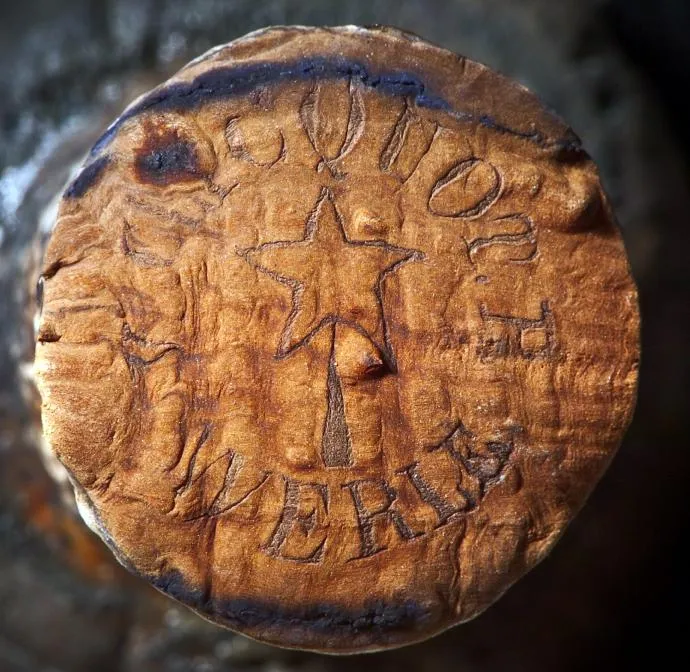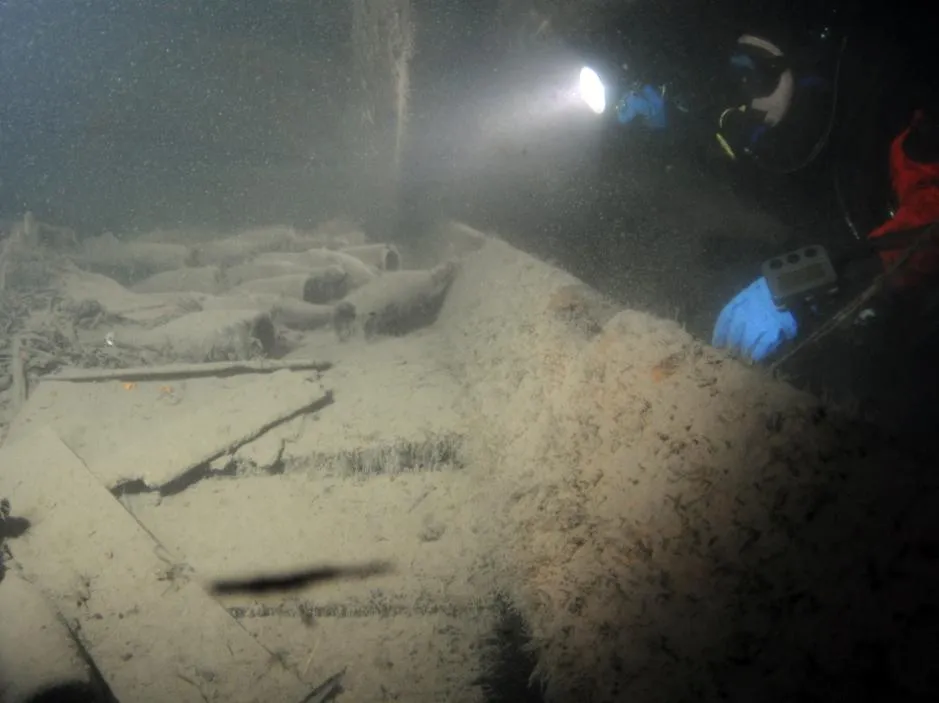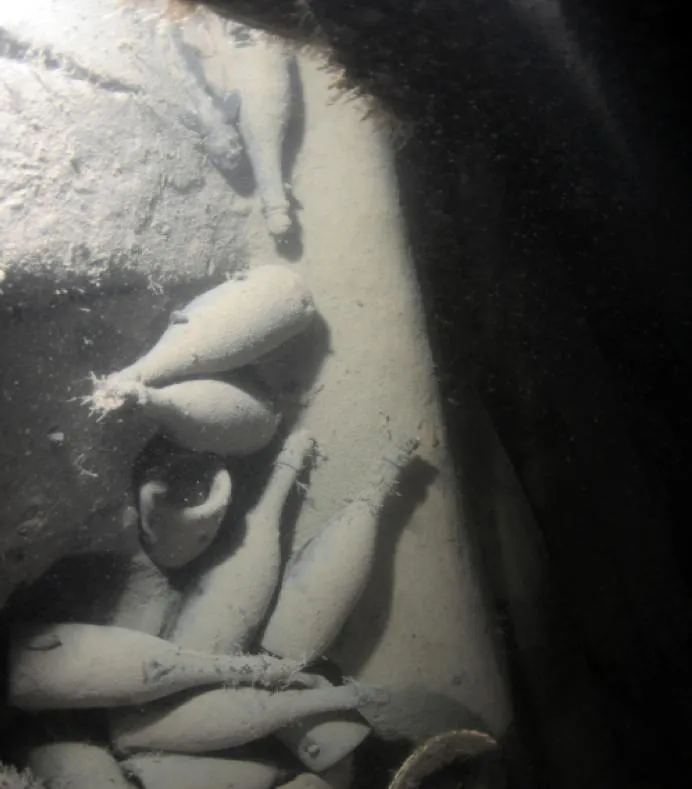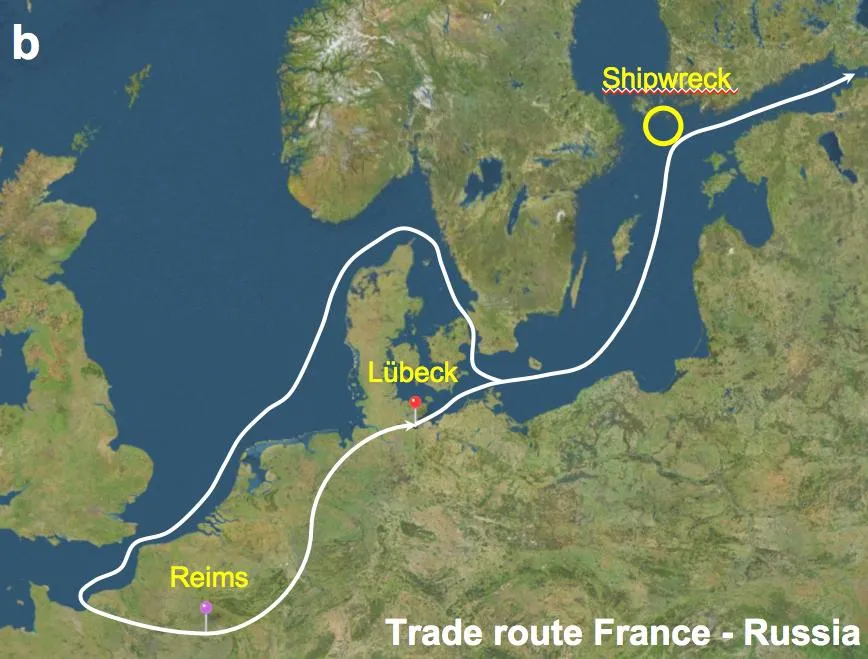170-Year-Old Champagne Recovered (and Tasted) From a Baltic Shipwreck
The uncorked bubbly goes from notes of wet hair and cheese to something spicy and smoky, enologists report
/https://tf-cmsv2-smithsonianmag-media.s3.amazonaws.com/filer/8d/36/8d369dd6-40c6-444c-840a-ce847f3a59eb/42-31620748.jpg)
The term “vintage” may now have a whole new meaning for wine lovers—a treasure trove of 170-year-old champagne has been unearthed from the bottom of the sea. In 2010, a group of divers in the Baltic Sea happened upon the remains of a sunken trade schooner just off the coast of Finland. Scattered amongst the wreckage 160 feet below the surface, they discovered a treasure sent from Dionysus himself—168 bottles of French bubbly that had aged in near perfect conditions for decades.
Although the local government ultimately claimed the bottles, a team of scientists led by Philippe Jeandet, a professor of food biochemistry at the University of Reims, was able to obtain a small sample of the preserved beverage for testing—and tasting. Their chemical and sensory analysis, published today in the Proceedings of the National Academy of Sciences, provides a unique lens into the past, offering information about conventional winemaking practices in the 19th century as well as the likely destination of the lost trade ship.
Despite the fact that the labels had long since worn off, branded images on the interior surface of the corks allowed the team to identify the original vintners. Several champagne houses were represented, including Veuve Clicquot Ponsardin, a well-known brand founded in 1772 that still exists today. To conduct their chemical analysis, the team compared the older “Baltic wine” with modern Veuve Clicquot. Their results show that the Baltic versions contained lower alcohol content and higher sugar levels than their modern-day counterpart.
Many of these chemical differences can be explained by “steps in the production process that were less controlled than they are today,” says Jeandet. Specifically, the researchers believe that the lower alcohol levels are a consequence of a colder average climate, which would inhibit grape maturation and overall levels of alcohol from sugar, as well as use of a less efficient yeast product. Also, while individual grapes did not produce particularly high sugar yields, 19th-century winemakers were known to add a considerable amount of sugar to artificially sweeten their champagnes. Addition of sugar syrup at the end of the production process would have diluted the wine, also possibly accounting for the lower alcohol content.
“Today most champagnes contain low levels of sugar that are added at the end of the process,” says Jeandet. “The Baltic wine we analyzed contained at least 140 grams of sugar per liter, as compared to about 6 to 8 grams per liter used today.”
The aged wine also had enhanced levels of iron, copper, sodium and chlorine. The researchers hypothesize that the increased concentration of iron and copper, accompanied by several wood compounds, suggests the use of metal- and wood-containing vessels during the manufacturing process. This contrasts with the steel vessels that are predominately used today. Furthermore, in the 1800s “copper sulfate was often used for the control of disease in the vineyard, as opposed to fungicide containing organic compounds used today,” says Jeandet. This also accounts for the high levels of copper compounds observed.
Meanwhile, the heightened levels of sodium and chlorine in the Baltic wine can be attributed to salt, which was repeatedly added to help stabilize wine during the 19th-century manufacturing process. Today, these similar processes occur after the blending of the wine, leading to relatively lower sodium levels.
According to the authors, the sugar content also provides an important clue about the destination of the trade schooner. The location of the wreckage suggests that the ship may have been destined for a Russian market. However, historical records of regional preferences in wine sweetness provide conflicting evidence. The Russians demanded extremely high sugar levels of around 300 grams per liter. Russians had such a sweet tooth that “it was common to have sugar on every table close to the wine glass—for they added sugar not only to red wine, but also to champagne,” says Jeandet. This spurred the creation of an entirely separate brand of extra-sweet bubbly called Champagne à la Russe.
The Germans and French, meanwhile, demanded more moderate sugar levels of approximately 150 grams per liter, while British and American connoisseurs preferred even lower levels of around 20 to 60 grams per liter. Based on the measured sugar content of the Baltic wine, the authors think this particular shipment was probably destined for the Germanic Confederation, whose constituents preferred more moderately sweetened champagne.
So what about the question that virtually everyone is asking: “What does this stuff taste like?”
By a stroke of luck, most of the bottles had been preserved in ideal conditions—at a depth characterized by minimal light and temperatures ranging between 35 and 39 degrees Fahrenheit. The researchers observed very low levels of acetic acid in the wine, a primary red flag for spoilage. So as part of the testing, the team had a panel of wine experts take a taste. The compiled responses were then compared to the chemical findings.
Initially, the experts described the Baltic wines with words such as “animal notes,” “wet hair” and “cheesy.” However, after the wine was swirled a bit in the glass, providing some much needed oxygen, it took on a whole new character. Once it had a chance to breathe, the champagne was described as “grilled, spicy, smoky, and leathery” accompanied by fruity and floral notes, according to the paper.
Although he was not given a bottle to keep for himself, Jeandet was able to obtain a small personal sample of 100 microliters to try. “It was incredible. I have never tasted such a wine in my life,” says Jeandet. “The aroma stayed in my mouth for three or four hours after tasting it.” Wine connoisseurs seem to agree, as several of these bottles have been auctioned off for up to 100,000 euros each, according to Jeandet. Other bottles have been sent to museums or historical institutions. Further work may prove useful to enologists who are now investigating the potential for deep-sea aging as a technique to enhance or augment the taste of various wines.



